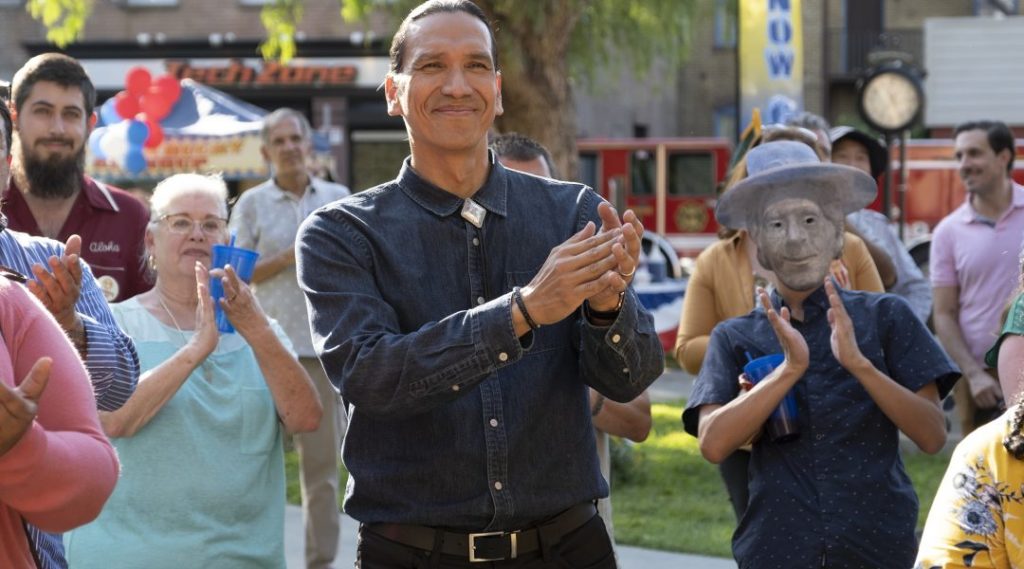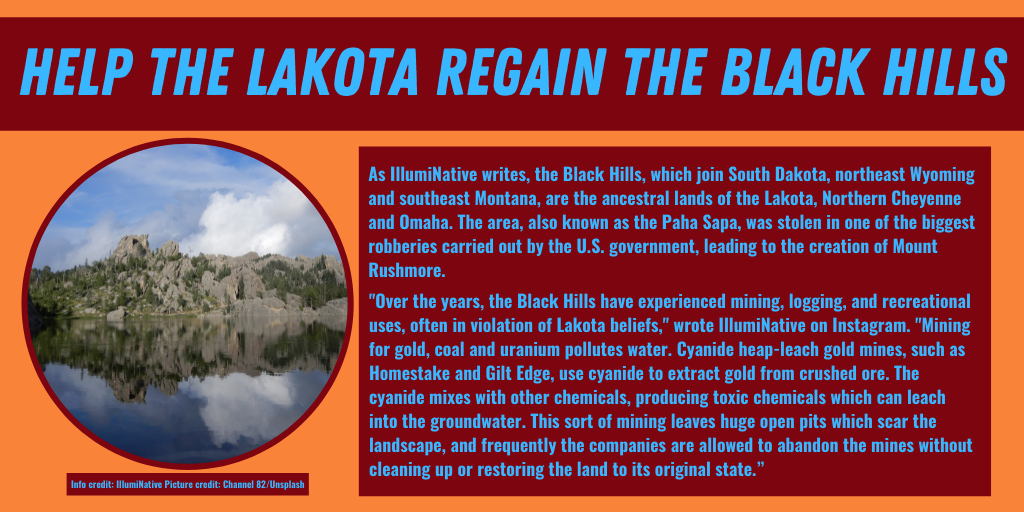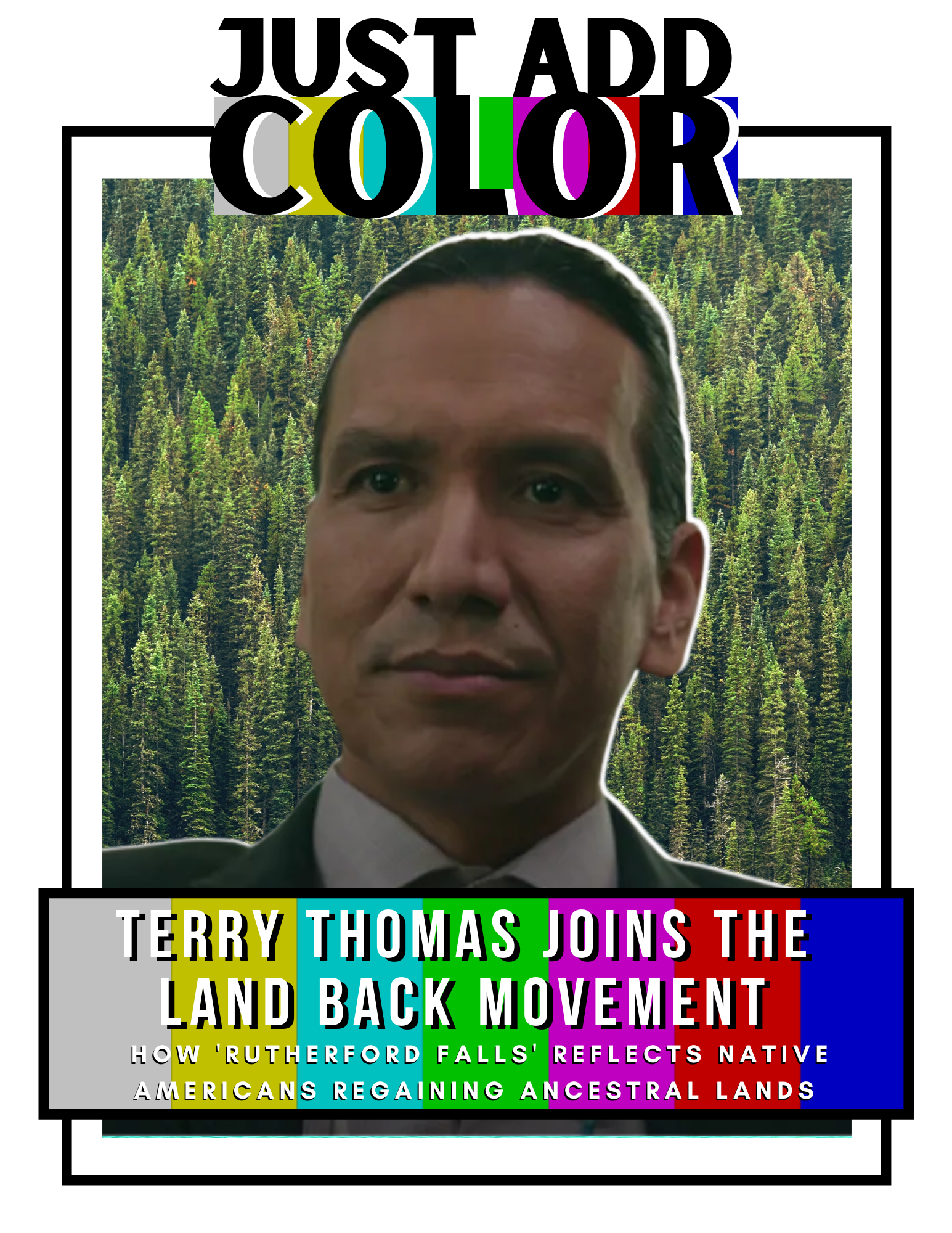The best scene from Peacock’s Rutherford Falls–a scene that functions as one of the theses of the show–is casino owner Terry Thomas (Michael Greyeyes) telling NPR reporter Josh Carter (Dustin Milligan), the definition of a white liberal podcaster, why beating white Americans at their own capitalistic games is important to him. For Terry, it means getting back the land that was stolen from his (fictional) Minneshonkan people and caring for it the way it was meant to be cared for.
“Have you ever heard of the seven generations?…It’s a practice to ensure that the Earth and our language and our people will not only exist but thrive seven generations from now,” he tells Josh. “That the decisions we make today will have an impact long after we’re gone. Everything I do and every move I make is to ensure the success of my nation.”
“Growing up I didn’t get to learn a lot of my traditional ways, but I did get to learn the great American pastime, which is power. Power, Josh, is a zero-sum game. If you have more of it, I have less, and then you can treat me however you want,” he continued. “If we want to ensure this tribe has a successful life, one that can maintain our traditions, art and culture, well, that takes power. And unfortunately, power comes from money. The casino is a means to an end…I won’t rest until my nation gets every single thing that was taken from them.”
The scene is one of the most poignant ones I’ve watched on television and, as was intended, I believe it led a lot of non-Indigenous viewers to shut up and think about America’s treatment of its first people. America has historically stifled and suppressed the Native American voice, which means Native Americans’ anger at their treatment has long gone unheard. But through Terry, Greyeyes delivered the anger and hurt many have felt for decades, if not centuries. As Greyeyes himself said to CBC News, it’s the speech he’s waited his whole career to give.
The speech is also important because it emphasizes the part Native Americans play in reclaiming America’s natural beauty, combatting ecological loss and curbing climate change. The idea of “seven generations” has been, of course, monetized by that popular eco-friendly home goods brand. But, as intimated by Terry, the notion has been around for much, much longer than capitalism and, if Indigenous people have a say, it’ll be around after capitalism has run its course.
Native American communities are eager to reclaim their lands, but not just for physical ownership. The return of these lands to their rightful owners from the American government is reclaiming culture, traditions, and ways of life nearly lost due to the history of Manifest Destiny. Among those traditions is responsible stewardship of nature. Enter the Land Back movement, which has gained steam in 2020 and 2021 as more and more ancestral lands are returned to Native communities.
As Wikipedia outlines, the Land Back movement “ains to re-establish Indigenous political authority over territories Indigenous tribes and activist groups claim as belonging to them.” The description also includes Ryerson University’s Yellowhead Institute, an Indigenous-run organization that describes the movement as “reclaiming Indigenous jurisdiction: breathing life into rights and responsibilities.” The Land Back movement also includes “respecting Indigenous rights, preserving languages and traditions, and ensuring food sovereignty, housing, and clean air and water.”
“Our sacred places are from our creation stories, where we hold ceremonies, and where our ancestors have begun their long walk,” wrote nonprofit organization IllumiNative on its Instagram account. “Our lands are critical to a healthy and traditional way of life. Whether it’s fishing, hunting, or ceremony we are inextricably connected to our lands. This relationship is why the theft of our lands has, and continues to, impact our people.”
“Through land seizures, forcible removal, and dishonest treaties, the US Government stole more than 1.5 billion acres from Native peoples,” the organization wrote. “In the past year, Tribes have begun purchasing their traditional territory from private ‘landowners’ and are now stewarding land previously held by the federal government. From Maine to Alaska, Tribes are reclaiming what was lost.”

Indeed, the list of land back wins for Native people is growing.
IllumiNative outlines several recent gains made by Indigenous communities. Alaska’s Native American activists killed a proposed mining road, leading to 44,000 acres of Bristol Bay to gain protection. More Native conservation initiatives are now pressing forward as a result. The Yurok Tribe of California bought a 40-acre farm this January, and now own over 44 miles of land along their historic Klamath River. The Confederated Salish and Kootenai Tribes now have complete control over the 18,000-acre bison range that resides within their reservation. The buffalo have been part of the Tribes’ traditions for centuries. Now, after 100 years of American seizure placing the range under government control, the Tribes have reclaimed an important part of their heritage.
Maine’s Passamquoddy Tribe’s Pine Island, also known as Kuwesuwi Monihq is now back under the Tribe’s jurisdiction. The Tribe bought the land for $355,000, reversing the robbery colonists carried out in 1820. In Minnesota, the state returned 114 acres to the Lower Sioux Indian Community. The acreage returned to the Community is a start, but as IllumiNative wrote, the Dakota people lived on millions of acres before an 1851 treaty forced them to give up the land.
More land back wins include the Eureka City Council in California transferred historic lands for the Wiyot people between 2004 and 2006. The 60+ acres of land has been added to the land the Tribe has purchased. The United Methodist Church repatriated land back to Oklahoma’s Wyandotte Nation in 2019, beginning to make good on the government’s 200-year promise of 148,000 acres to the Nation. And in 2020, the Esselen Tribe bought at 1,200 ranch near Big Sur, California, part of a deal equaling $4.5 million. The ranch “will protect old-growth, forest and wildwife, and the Little Sur River.”
With land back under Indigenous control, Indigenous practices can flourish, which are net positives for everyone. Scientific studies are only confirming what Native people already knew: Indigenous practices help the planet.
Take for instance wildfire prevention and maintenance. Lakota Law reports how Indigenous fire management practices have been in line with ecological stewardship for thousands of years.
“For over 13,000 years, the Chumash, Hupa, Karuk, Miwok, Yurok, and many other tribes across California have used intentional burns to reduce the risk of large wildfires, help renew local food, and create habitat for animals,” wrote the site. “In an archaelogical study in the Great Plains, researchers found evidence indicating that Indigenous fire burning methods enhanced climated variability in praire fire landscapes.”
“Where Indigenous communities steward the land, fire and water is better managed,” Lakota Law continued. “Returning more land to Indigenous people and having Indigenous leaders’ input on land management strategies is essential in combating a cataclysmic climate crisis. Land Back restores Indigenous Nations’ sovereignty and encourages more connection with the earth.”
As Saulteaux writer and community organizer Nickita Longman wrote, the Land Back movement, climate action, and traditional cultures are intertwined.
“Landback cannot be co-opted by the government and turned into a performance…perhaps in the way we have seen with “reconciliation.” Landback is a statement. It’s a demand. There is no room for discussion or theory, and it will not wait on recommendations or policy change,” she wrote for Grist. “Landback, to me, means a combination of a return to things while also taking into account the ways in which Indigenous people have evolved into the present and how we will continue to evolve into the future. Landback means access to sustainable food from the land, and it means affordable housing in urban settings. It means a return to our languages and incorporating harm-reduction strategies into ceremony. It means a return to matriarchy in a way that my generation has never known.”
“Landback, to me, is this beautiful fusion of the core foundations of our ancestors, with room for growth and expansion in envisioning Indigenous futurisms,” she continued. “In 10 or 20 years, I hope Indigenous people are speaking our languages, practicing food sovereignty, and exercising full jurisdiction over land and water both in rural and urban spaces.”
As Terry told Josh, he will not rest until his people have everything that was taken from them. His drive and determination are felt by Native activists in real life too–they also won’t rest until the Land Back movement reclaims everything stolen from their people.

Sign the petition to return the Black Hills to its rightful owners at Red Road To DC.
